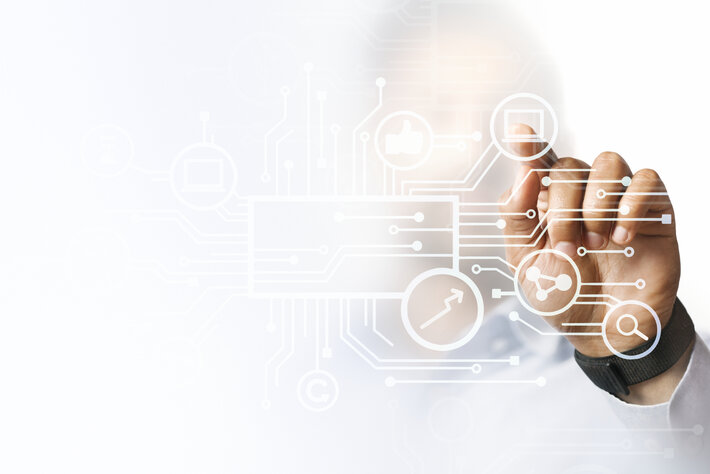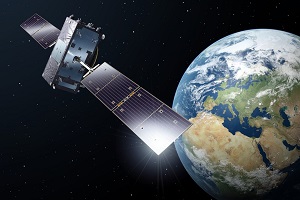We’re all familiar with wireless devices these days. They have completely taken over entertainment, communication, and work. As wireless takes over industrial operations, the requirements have evolved to include higher bandwidth and more security for critical operations. Today there is a dizzying array of wireless technologies available from Cisco and other companies, and the customers I meet with are often confused about what technology they should be using in their Industrial IoT operations. Amidst a plethora of options from Cisco and others, it’s vital to understand the strengths of each technology.
I really understand their confusion. Not only are there new technologies every few months, but I’m also not sure the industry is making it any easier to understand what technology should be used for what tasks.
In deciding about what technology to use, let’s first ask some questions about what they might be trying to accomplish:
- What are we trying to connect? Are these vehicles? Sensors? Tablets?
- How resilient does this need to be? Do we need high bandwidth or not?
- Is this indoor or outdoor?
- How much do we think this should cost?
Those are just a few of the kinds of questions that an Enterprise might ask. Let’s take a quick look at just a few technology options in the market right now:
Comparative analysis:
- Industrial Wi-Fi
Wi-Fi is a mature technology now, and new iterations such as Wi-Fi 6 or 6E are well suited to industrial use cases, offering new battery management technologies suited for mobile devices. Most everyone knows that Wi-Fi networks are generally limited to service within buildings. For large coverage areas, the cost of the infrastructure might be prohibitive.
- Public and private 5G
5G wireless technology delivers higher data speeds, lower latency and higher densities. However, to get higher data rates, there will often be a large array of antennas to provide coverage. 5G is also licenced spectrum and is subject to a variety of regulations.
- Cisco ultra-reliable wireless backhaul (CURWB)
CURWB gives customers very high throughput for fixed antennas, and even moving vehicles. It operates in an unlicensed spectrum, and hands off between antennas with zero delay even if it is moving at high speeds. I often tell customers that it is like a form of wireless fibre replacement.
- LoRaWAN
A very low power, very long-range wireless solution, the LoRaWAN ecosystem is very dynamic, with many companies producing low-cost sensors for a multitude of uses. These sensors can transmit for many miles, and the batteries last for years.
Although I have deployed LoRaWAN for indoor applications such as brownfield smart building uses, it really shines in outdoor applications. Just a few gateways can support thousands of sensors deployed over many square miles. The sensors can be inexpensive, and they do some amazing things.
That’s just a few of the technologies out there today that might play in the Industrial IoT space. I’m sure there will be a few more in the next years. To make sense of how an Enterprise might choose between different technologies, let’s just take a look at four different verticals that might use Industrial Wireless.

Real-world applications:
- Rail
European high-speed rail will use Wi-Fi, LoRaWAN and CURWB. They will connect passengers and applications on the train using Wi-Fi and then the train to the trackside infrastructure using CURWB. At the same time use cases like monitoring of railroad crossings, cold chain monitoring in refrigerated railroad cars, or simply tracking of the latter all are a much better fit for LoRaWAN. For instance, the French operator of the world’s second-busiest rail network, SNCF, is extensively adopting LoRaWAN IoT solutions, enabling transformative asset and rolling stock management through real-time monitoring and predictive maintenance.
- Ports and Terminals
Cisco URWB and 5G might be used for equipping cranes and vehicles with appropriate radios, but that might depend on the availability of 5G in that region. Wi-Fi will be widely used for handheld devices, with CURWB providing backhaul for the Wi-Fi APs. LoRaWAN is now widely used in logistics and will often be found in sensors tracking goods and workers. Various sensors interconnect the ports infrastructure in a digital web of data, bringing to the attention of the operators’ abnormal vibrations in equipment, presence of dangerous or explosive gases, location of the hardware and much more.
- Mining
A mine is found in a harsh, unforgiving environment. CURWB is an option to a wired network, removing the need for costly wired network changes. Industrial Wi-Fi or 5G allows for worker collaboration, and LoRaWAN can be deployed for worker safety and vehicle monitoring. Remote-controlled mining trucks commonly use up most of the WiFi bandwith, hence it is common to see mining sites utilising both WiFi and LoRaWAN network. For example, Mina Justa, a major Peruvian mining project, deployed LoRaWAN-connected devices to protects its workers. Coal India also deployed a worker safety solution using LoRaWAN.
- Connected Cities
These days, citizens expect that their locality will use digital technology to connect, protect and enhance the lives of citizens. Many cities offer their citizens data collected from a variety of sensors to monitor environmental conditions, manage assets, and improve city services. LoRaWAN is a good fit for these outdoor use cases, as shown by a efficient deployment in the Portuguese city of Caldas da Rainha. A municipality might also provide public Wi-Fi downtown, at bus stops and train stations.
- Manufacturing, warehousing and logistics
To enhance efficiency and safety, manufacturers are using BLE and GPS-enabled LoRaWAN trackers instead of traditional RFID, due to better range and coverage. This technology allows precise tracking of goods, vehicles, and workers, significantly improving supply chain management. LoRaWAN also ensures high-end security, crucial for deployments like US Military missions and high-security sectors. More on this can be found in the recent webinar on ‘Enhancing Operational Efficiency with LoRaWAN IoT in High-Security Sectors’.
To recap, most enterprises are deploying multiple wireless technologies at the same time to support very different use cases. I think it is very important that they choose the right technology for each case and develop the capacity to service multiple wireless technologies within that enterprise.
In the rapidly expanding LoRaWAN ecosystem, Actility emerges as a key player. Cisco and Actility work closely together as technology partners, jointly deploying LoRaWAN solutions around the world. This partnership, enhanced by Cisco’s role as an investor and global channel partner, supports the deployment of Actility’s versatile, hardware-agnostic IoT platform including LoRaWAN®, LTE-M, NB-IoT, and satellite radio networks.
Comment on this article via X: @IoTNow_
This article was written by
Michael Harttree, Federal IoT Architect at CISCO
https://www.linkedin.com/in/michaelharttree/










